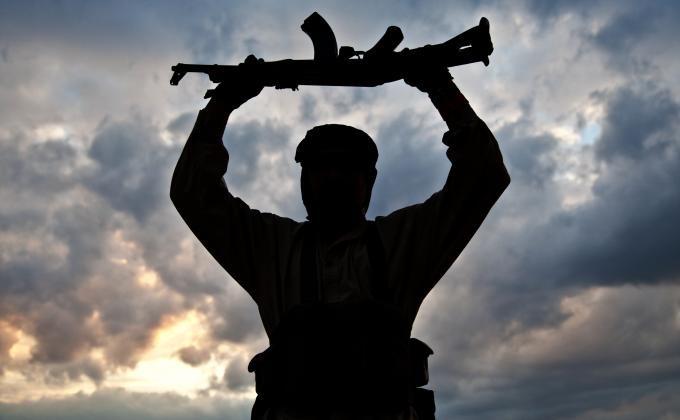This Commentary aims to discuss accountability and transparency in the counter-terrorism strategy of the United States (US) in light of the recently released “Torture Report”. In this report, the United States Senate Select Committee on Intelligence (SSCI) documents instances of torture carried out by the United States in the past several years at various black-site prison locations throughout the world. It was at these sites where techniques such as “waterboarding, keeping a prisoner naked in a cold cell and dousing him with cold water, forcing the prisoner to stand shackled for hours on end (often including sleep deprivation), shaking the prisoner, and two types of slaps to the prisoner” were applied. The report itself is a massive 525-page executive summary of the larger report (of over 6,000 pages) reviewing over six million documents from the Central Intelligence Agency (CIA). The main SSCI conclusions were that the “enhanced-interrogation” techniques employed by the CIA amounted to torture; that torture was not effective at eliciting reliable information and furthermore, it did not contribute to finding Osama bin Laden; and that the CIA misled the public, imprisoning far more suspects than it had previously acknowledged.
It must be commended that the SSCI led by outgoing chairwoman Dianne Feinstein has produced and managed to present the summary of the Torture Report in the face of a sharply divided Congress on the matter. With respect to the importance of the report, Feinstein herself noted:
“It's really about American values and morals. It's about the Constitution, the Bill of Rights, our rule of law. These values exist regardless of the circumstances in which we find ourselves. They exist in peacetime and in wartime. And if we cast aside these values when convenient, we have failed to live by the very precepts that make our nation a great one".
Furthermore, in reaction to the report, President Obama weighed in on the importance of transparency in the debate on torture when he said:
“…I have consistently supported the declassification of [the] report. No nation is perfect. But one of the strengths that makes America exceptional is our willingness to openly confront our past, face our imperfections, make changes and do better".
The Torture Report itself is also not perfect, (in fact, a dozen former top CIA officials presented a refutation to it on their own website). Nevertheless, this report could be an important step in moving forward with US obligations under both domestic and international law. The Convention Against Torture and Other Cruel, Inhuman or Degrading Treatment as well as the US domestic War Crimes Act demand prosecution and judicial accountability. Deborah Pearlstein has done an impeccable job outlining reasons why—political considerations aside—prosecution can and must be pursued on the basis of this report.
Yet, the release of this specific report does not do away with of the lack of transparency and accountability in the US’ counterterrorism campaign. Indeed, torture is just one of the many violations of civil liberties, human rights and international law carried out by the United States since 9/11 [1]. President Obama ordered torture to stop, in his words, because:
“these harsh methods were not only inconsistent with our values as nation, they did not serve our broader counterterrorism efforts or our national security interests. Moreover, these techniques did significant damage to America’s standing in the world and made it harder to pursue our interests with allies and partners".
He went on to say it was for these reasons he has decided “never to resort to those [torture] methods again”. While the resort to torture might become history, the continuing use of drones by the US (with Obama allegedly signing off on all targeting decisions) has created another “black hole” in terms of morality in the geographically unlimited “war on terrorism”. There has been no meaningful transparency into how the US goes about selecting targets and carrying out targeted killings or into the number of civilian casualties that occur as a result of the drone operations.
Since 2002, the US has been involved in carrying out such operations, against suspected or alleged members of al-Qaeda and/or associated forces. While there can be little doubt that the intention is to target those who pose a threat to the United States, this type of remote killing is not meeting standards of international law. In as far as the strikes are being carried out in a recognised area of armed conflict, the applicable international humanitarian law standards of military necessity, humanity, proportionality and distinction must be adhered to. Outside recognised areas of armed conflict, human rights law must prevail. According to several reports, this is not always the case.
One example of this is the death of civilians during a December 2013 wedding in Yemen. On that wedding day, a group of eleven vehicles was traveling in a convoy taking the bride to the groom’s hometown. US drones fired four Hellfire missiles into the convoy, killing twelve people and injuring fifteen others. The reaction from the US was that they were targeting al-Qaeda operatives, though all witnesses disputed any al-Qaeda involvement of those who became victims. According to Human Rights Watch, all victims and injured parties were civilians. Neither the US nor the Yemeni government has offered any information that those interviewed by Human Rights Watch listed as killed and injured were involved in any sort of militant activities. The families of the victims and injured did receive approximately a $1million payout, allegedly from the Yemeni government. The US still has not acknowledged any involvement in the strikes or the payouts. With respect to transparency, Human Rights Watch gets to the heart of the issue in its conclusion:
“In refusing to acknowledge any role in the strike, the United States has also failed to demonstrate that the alleged target was present, could not feasibly have been arrested, or posed a “continuing and imminent threat”—three other US policy requirements. Rather than instilling confidence that its attacks are lawful and adhere to US policy, the silence of the Obama administration on strikes such as the one on the December 12 wedding procession instead magnifies the concerns. The failure to publicly acknowledge and investigate attacks causing civilian casualties not only violates the international legal obligations of the United States, it also shows an unwillingness to address the harms inflicted on Yemen’s civilian population".
The targeted killing campaign has been orchestrated across several levels of the US government, not least by the branches of the military but also—and key here with respect to the scathing Torture Report—by the CIA. (Philip Alston has written an extensive article about the CIA’s involvement in the targeted killings here). The publicly known details of the targeted killing program are sketchy at best and it is for that very reason that transparency with respect to the legal framework of the program is paramount.
Questions related to the legality of the US drone strikes have been raised by various experts and groups on the topic (e.g., from Ben Emmerson, Christof Heyns, the European Parliament, ACLU, NYU/Stanford, Amnesty International, Human Rights Watch, etc. [2]). These are nearly unanimous when it comes to criticising the lack of accountability and transparency with respect to the targeted killing policy. At this time, the legal basis for who is being targeted and where is not in the public domain. It is notable that with respect to torture, the Bush Administration did release the 2002 Yoo/Bybee torture memos, providing at least a semblance of a legal reasoning behind the torture for scrutiny, whereas the only document available from the Obama administration that attempts to justify the drone policy is a leaked white paper from the Justice Department that outlines the parameters for targeting Americans abroad in a foreign country outside the area of an active armed conflict.
Accountability is a necessary mechanism in the enforcement of domestic and international law. When there are allegations that the law has been violated, the legitimacy of the rule of law the US purports to defend is at stake. But accountability and transparency are not selective ventures. That is to say, the buck does not stop with coming clean only with respect to select violations of law (e.g., torture). Accountability must be present throughout all government action, and preferably not years after the fact—as is the case with the torture report.
As the conflict in Afghanistan takes on a new dimension with the US calling a formal end to combat operations in Afghanistan, the chance that the drone strikes will come to an end there is slim, given that the country is still identified as an “area of active hostilities”. In fact, “a ‘formal’ end to the war means the beginning of an 'informal' war, without aim or end, founded on the lie that we are no longer at war”. In this situation, transparency and accountability might become even more difficult to achieve.
Without transparency and prosecution, where appropriate, for disproportionate civilian casualties or civilian deaths outside of areas of a recognised armed conflict there can be no accountability.
As to the value of transparency, in the Torture Report, Chairwoman Dianne Feinstein summarised it nicely: “It shows that the CIA's actions a decade ago are a stain on our values and on our history. The release of this 500-page summary of our report cannot remove that stain, but it can and does say to our people, and the world, that America is big enough to admit when it's wrong and confident enough to learn from its mistakes. Releasing this report is an important step to restore our values and show the world that we are in fact a just and lawful society”.
The first step in accountability has been taken with respect to the torture allegations, but it is not adequate to stop there. The ongoing targeted killing program being carried out by the US government must also be subjected to similar scrutiny, in the name of accountability and transparency. This could start with the release of the legal memos that exist within the Department of Justice, the CIA, Joint Special Operations Command and other involved departments to shine light onto the legal justification of the drone strikes. Only then will the world see the US on the road back to a society adhering to the rule of law. In President Obama’s own words, it is now time “to openly confront our past [and present], face our imperfections, make changes and do better”.
[1] For example, see Priti Patel, Ensuring Accountability: International Law and Post-9/11 U.S. Detention Policy; American Civil Liberties Union, Top Ten Abuses of Power Since 9/11, and Benedikt Goderis and Mila Versteeg, Human Rights Violations after 9/11 and the Role of Constitutional Constraints.
[2] Additionally, an ICCT Research Paper by the current author and Research Fellow Dr. Christophe Paulussen summarised the Boundaries of the Battlefield symposium, where similar themes were addressed and similar conclusions and calls for accountability were made. The same two authors are currently working on a follow-up to the Boundaries symposium in the context of European Union member states’ use of armed drones.








